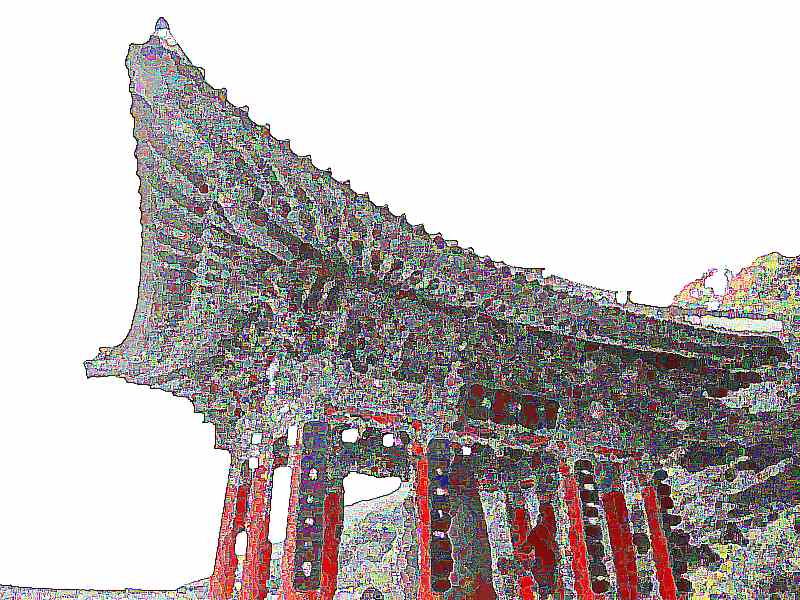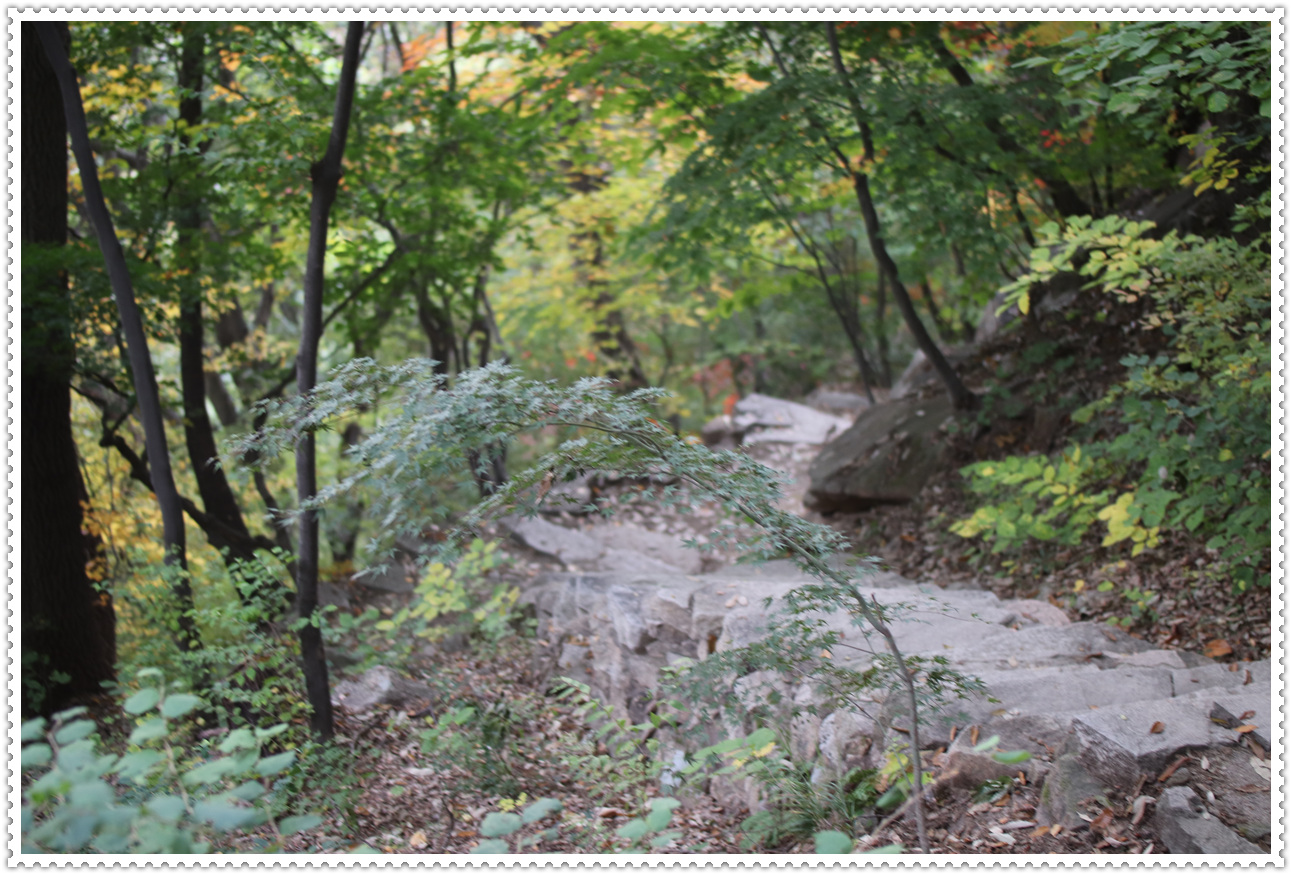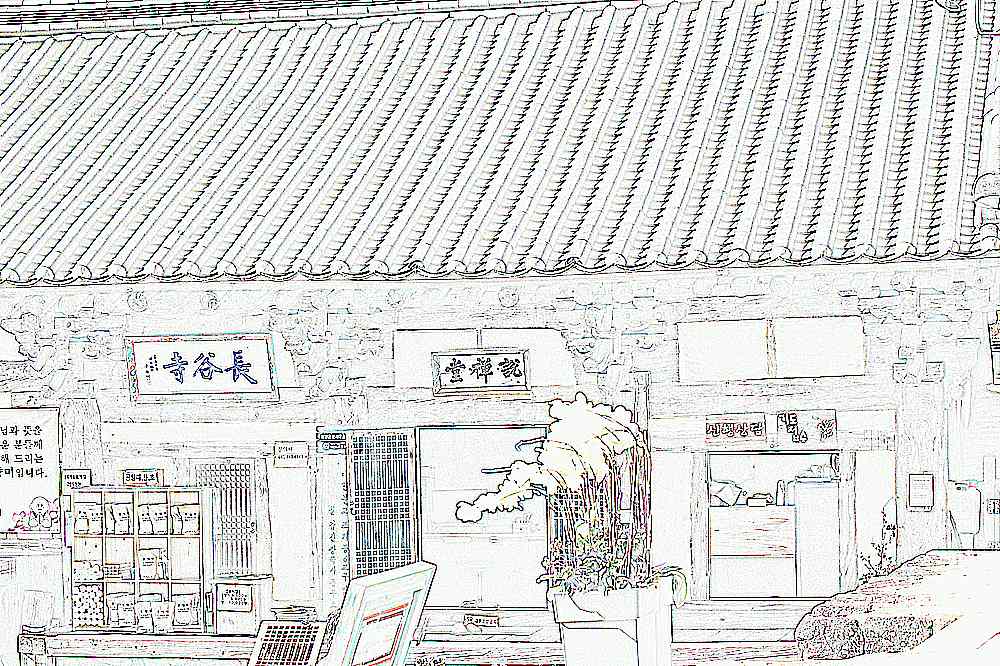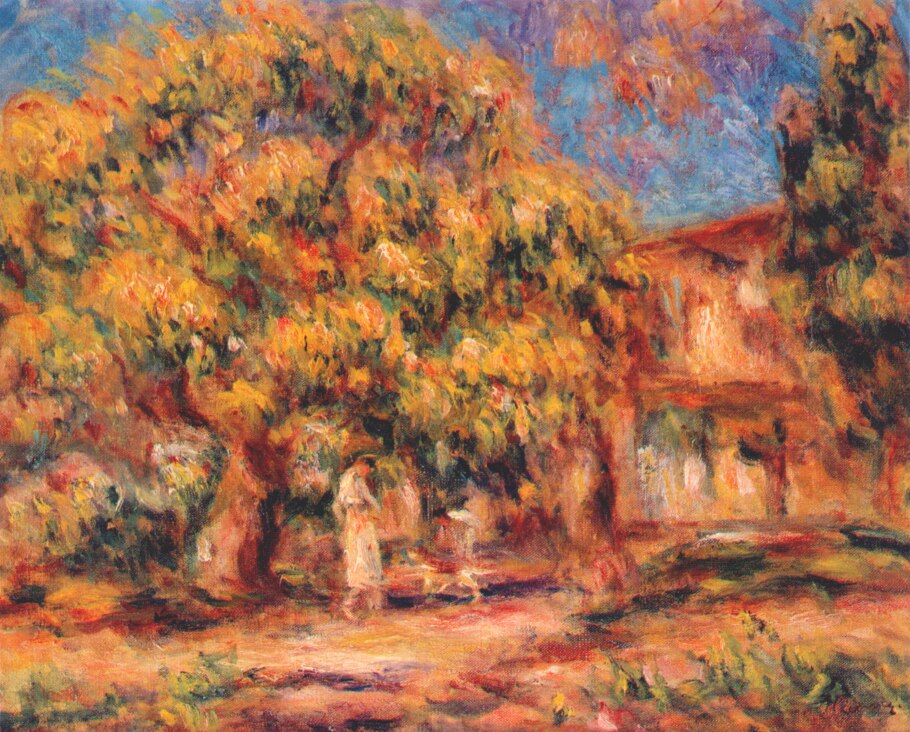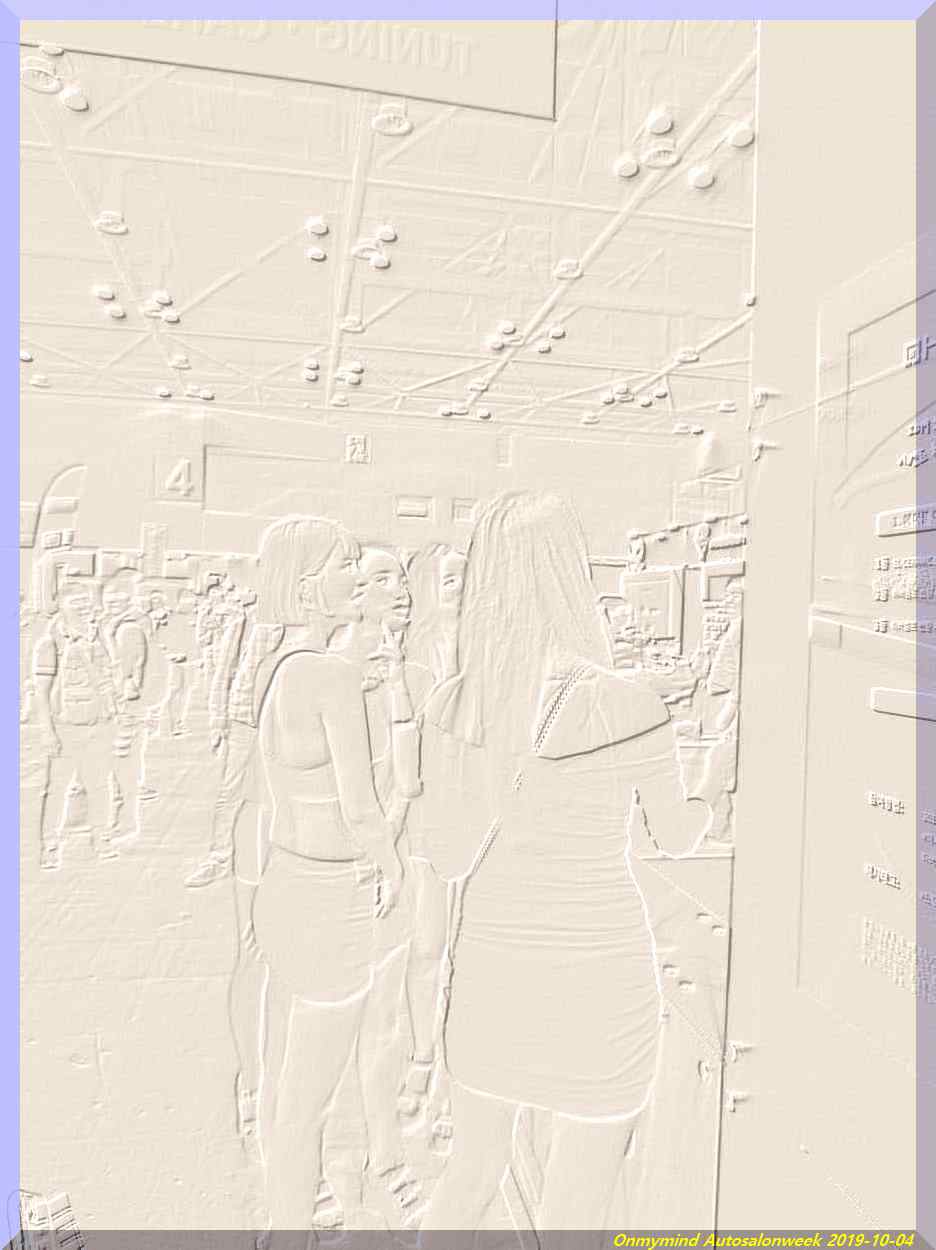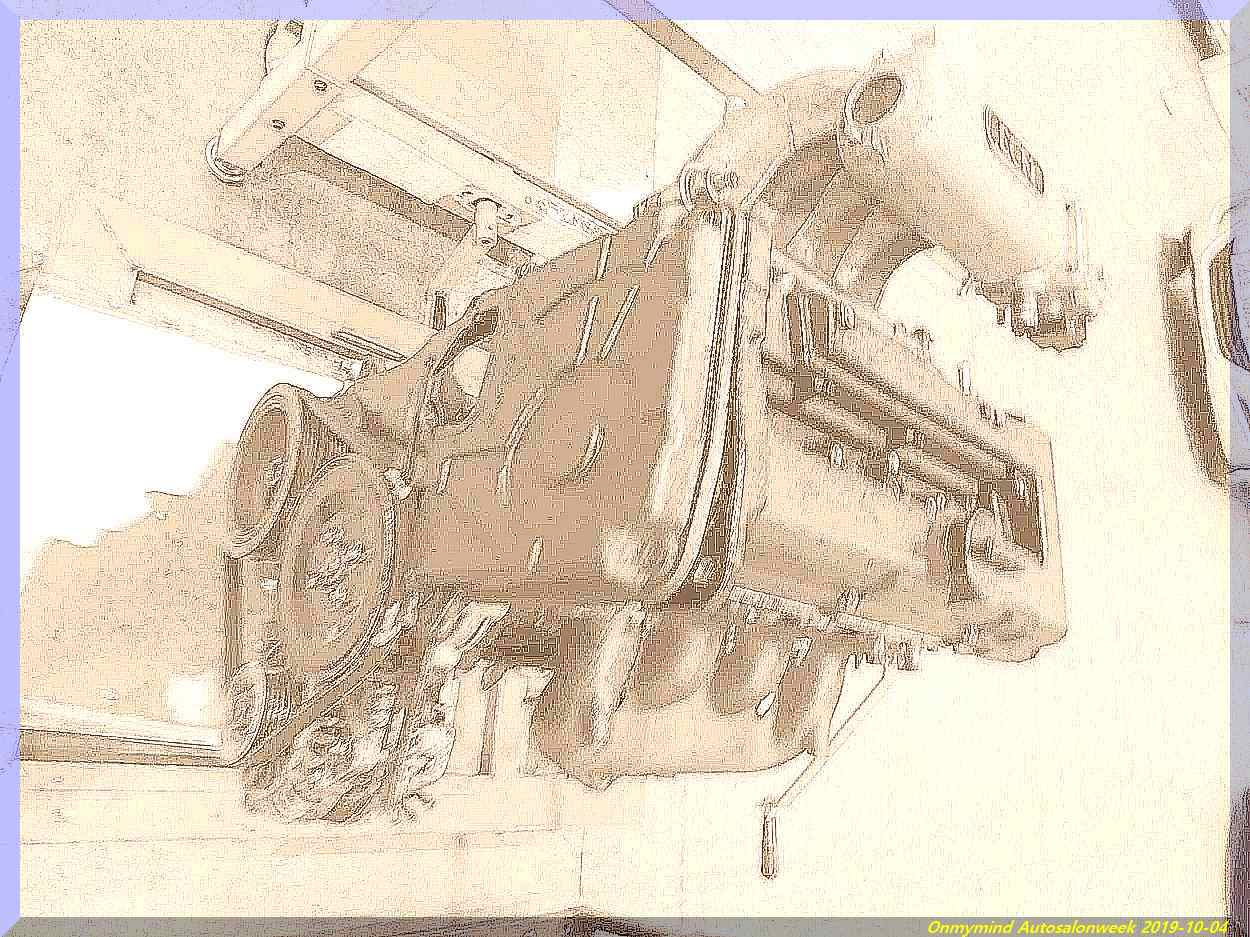타화자재천이 욕계의 여섯번째 층이라는 데서 제육천마왕(第六天魔王) 또는 그냥 마왕(魔王)이라고 한다.
영문위키 - 한글번역 by 구글
https://en.wikipedia.org/wiki/Mara_(demon)
마라 (악마)
무료 백과 사전, 위키피디아에서
탐색으로 이동검색으로 이동다른 용도에 대해서는 Mara를 참조하십시오 .

Swat Valley 에서 발견 된 Gandhara 스타일 의 Mara 구호 조각

마라의 악마. 종려 잎 원고 . Nalanda , Bihar , 인도

부처에 대한 마라의 공격 ( 무조 한 표현 : 부처는 그의 왕좌에 의해서만 상징 됨 ), 2 세기, 아마라 바티 , 인도

부처를 유혹하려는 마라를 재현 한 말레이시아 벽화

모가 오 동굴 의 10 세기 아이콘에서 부처를 유혹하려는 마라, 그의 튼튼한 딸들과 악마 군대
마라 ( 산스크리트어 : मार , 마라 , 일본어 :マーラ, 로마자 : 마라 , 중국의 전통 :天魔/魔羅, 중국어 간체 :天魔/魔罗, 병음 : Tiānmó / Móluó , 티베트어 와일리 : bdud , 크메르어 : មារ , 버마어 : မာရ်နတ် ; 태국어 : มาร ; 신 할라 어 : මාරයා ), 불교, 싯다르타 왕자 ( 고타마 붓다 )를 유혹하여 다양한 전설에서 종종 마라의 딸이라고 불리는 아름다운 여성들의 환상으로 그를 유혹 한 악마 천상의 왕이다 . [1]
에서 불교 우주론 , 마라 죽음, 부활과 욕망과 연관되어 있습니다. [2] Nyanaponika Thera 는 Mara를 "깨달음에 반대하는 세력의 의인화"라고 묘사했습니다. [삼]
내용
1어원
24 가지 유형의 마라
삼캐릭터3.1세 딸
3.2마라의 개종
4대중 문화에서
5또한보십시오
6메모
7출처
8추가 읽기
9외부 링크
어원 [ 편집 ]
"Māra"라는 단어는 어근 mṛ 의 산스크리트어 형태에서 유래 합니다.
현재 표시 형 mṛyate 와 원 인형 mārayati ( ṛ에서 ār 로의 어근 모음 강화 포함)를 사용합니다. Māra 는 원인이되는 어근에서 유래 한 언어 명사로 '죽음'또는 '살인'을 의미합니다.
[4] : 이것은 같은 동일한 루트에서 사망 즉 관련된 마라 및 mṛtyu . 후자는 의인화 된 죽음의 이름이며 때때로
Yama 와 동일시됩니다 .
어근 mṛ 은 "죽음, 살인 또는 파괴"라는 맥락에서 "죽고, 사라진다"를 의미 하는 인도-유럽 어근 * mer 와 관련이 있습니다.
Mallory와 Adams에 따르면, 그것은 인도 유럽 언어에서 "매우 널리 퍼져있다"고 말하며 고대의 것으로 암시합니다.
[5]
네 가지 유형의 마라 [
편집 ]
전통 불교에서는 "마라"의 네 가지 은유 적 형태가 주어진다.
[6]Kleśa-māra -Māra 는 탐욕, 증오 및 망상과 같은 모든
미숙 한 감정 의 구체화입니다 .
Mṛtyu-māra -Māra as
death .
Skandha-māra- 조건화 된 존재 전체에 대한
은유 로서의 Māra .
Devaputra-māra- 부처님의
깨달음 의 밤에 고타마 부처님
이 재생 의
주기 에서 해방되는 것을 막으려했던 감각적 영역 의
천신 .
캐릭터 [
편집 ]
초기 불교 는 마라에 대한 문자 적, 심리적 해석을 모두 인정했습니다.
[7] [8]
마라의 존재 갖는 엔티티로 모두 설명
카마 세계를 ,
[9] 마찬가지로 부처 주위 기존 도시하고, 또한 설명되어
연기 로 주로의 보호자
열정 정욕 주저 두려움 촉매 불교도들 사이에서
명상 을 방해 합니다.
부처님은 왼손은 무릎에, 손바닥은 위쪽을 향하고
오른손은 오른쪽 무릎에 얹혀 있습니다.
세 딸 [
편집 ]
부처님의 깨달음에 대한 일부 기록에서 악마 마라는 그의 세 딸을 유혹하지 않고 대신 깨달음을 추구하는 부처님의 탐구를 제거하려는 노력에서 마라가 좌절 한 후에 기꺼이 왔다고합니다.
[13]
예를 들어,의
상 윳따 니까야 의 마라 SA- M yutta , 마라의 세 딸 불상 앞에 스트리핑시켰다 그러나 부처를 유인하지 못했습니다.
그들은 아름다움으로 반짝이는 그에게 왔습니다.Taṇhā, Arati 및 Rāga –하지만
스승은 바로 그곳에서 그들을 휩쓸 었습니다
일부 이야기는 매력, 혐오, 망상의 세 가지 독을 대표 할뿐만 아니라 딸 Pride, Fear도 포함하는 Five Daughters의 존재를 언급합니다.
마라의 전환 [
편집 ]
램프의 전송의 Jingde 기록 과
Denkoroku는 스님의 후원하에 불교 마라의 전환의 이야기를 포함 모두
우파 겁타을 .
이야기에 따르면 Upagupta는
Mathura 왕국으로 여행 하여 Dharma를 큰 성공으로 설교했습니다. 이로 인해 마라의 궁전이 떨리고 신이 법에 대항하는 그의 파괴적인 힘을 사용하게되었습니다. Upagupta가
samadhi 에 들어갔을 때 Mara는 그에게 다가가 목에 옥 목걸이를 걸었습니다.
Upagupta는 사람, 개, 뱀의 시체를 화환으로 바꾸어 보답하여 Mara에게 선물했습니다. Mara는 선물의 진정한 본질을 발견했을 때 그것을 제거하기 위해
Brahma 의 도움을 구 했습니다. 브라흐마는 그 목걸이가 부처님의 진보 된 제자에 의해 수여 되었기 때문에 그 효과는 우파 굽타에 피난처를 가져야 만 확신 할 수 있다고 그에게 알려주었습니다.
마라는 스님 앞에 엎드려 회개 한 인간 세계로 돌아 왔습니다. Upagupta의 권고에 따라 그는 법에 해를 끼치 지 않겠다고 맹세하고
Three Jewels에 피신했습니다 .
[16]
이전 출처에는 마라가 자신의 고통이
풀렸을 때 낭송 한
가타 가 포함되어 있습니다 .
세 삼매의 스승을 숭배
하고 열 대국의 현자 제자를 숭배합니다 .
오늘 나는 비열함이나 약함
의 존재를 고려하지 않고 그에게로 향하고 싶습니다
.
[17]대중 문화에서 [
편집 ]
Mara는
Megami Tensei 비디오 게임 시리즈에서 악마 로 두드러지게 등장했습니다 . 시리즈 내에서 마라는 큰 남근 생물로 묘사되며 종종 황금 전차를 타는 모습을 보여줍니다. 그의 남근의 몸과 풍자 - 라덴 연설은 단어 둘러싼 말장난을 기반으로 마라 하는
일본의 초기에 938 CE 등으로 증명된다 "음경"에 대한 단어를
Wamyō Ruijushō , 한자의 일본어 사전. 산세이도 사전에 따르면이 단어는 원래 불교 승려들 사이에서 "성기"에 대한 완곡 어로 사용되었는데,이 단어는 감각적 욕망을 깨달음의 장애물로 언급합니다.
[18]
Mara는
Roger Zelazny 의 소설
Lord of Light 에서 환상의 신으로 등장 합니다.
[19]
마라 는 고대 악마에 대해 Clive Tonge가 감독 (공동 작) 한 2018 년 영화입니다.
2020 년에 싱어 송 라이터
Jack Garratt 는 "Mara"라는 노래를 발표했습니다. 마라가 부처님을 산만하게하는 이야기에서 영감을받은 "마라"는 가라 트의
침입 적 사고 경험을 묘사 합니다.
[20]
마라는
디즈니 랜드 와
도쿄 디즈니 씨의 인디애나 존스 어드벤처 를 타고 길항합니다 . 그녀는 그녀의 눈을 들여다 보는 사람들을 모두 죽이려고합니다.
카테고리 :불교의 악마
불교와 죽음
파괴자의 신
[ 영어원문 ]
https://en.wikipedia.org/wiki/Mara_(demon)
Mara (demon)
From Wikipedia, the free encyclopedia
Jump to navigationJump to searchFor other uses, see Mara.

Relief fragment of Mara in Gandhara style, found in Swat Valley

The demons of mara. Palm leaf manuscript. Nalanda, Bihar, India

Mara's assault on the Buddha (an aniconic representation: the Buddha is only symbolized by his throne), 2nd century, Amaravati, India

Malaysian wall painting represeting Mara attempting to tempt Buddha

Mara, his lusty daughters, and demonic army, attempting to tempt Buddha, on a 10th-century icon from Mogao Caves
Mara (Sanskrit: मार, Māra; Japanese: マーラ, romanized: Māra; traditional Chinese: 天魔/魔羅; simplified Chinese: 天魔/魔罗; pinyin: Tiānmó/Móluó; Tibetan Wylie: bdud; Khmer: មារ; Burmese: မာရ်နတ်; Thai: มาร; Sinhala: මාරයා), in Buddhism, is the demonic celestial king who tempted Prince Siddhartha (Gautama Buddha) by trying to seduce him with the vision of beautiful women who, in various legends, are often said to be Mara's daughters.[1]
In Buddhist cosmology, Mara is associated with death, rebirth and desire.[2] Nyanaponika Thera has described Mara as "the personification of the forces antagonistic to enlightenment."[3]
Contents
1Etymology
2Four types of Māra
3Character3.1Three daughters
3.2Mara's conversion
4In popular culture
5See also
6Notes
7Sources
8Further reading
9External links
Etymology[■Edit]
The word "Māra" comes from the Sanskrit form of the verbal root mṛ. It takes a present indicative form mṛyate and a causative form mārayati (with strengthening of the root vowel from ṛ to ār). Māra is a verbal noun from the causative root and means 'causing death' or 'killing'.[4] It is related to other words for death from the same root, such as: maraṇa and mṛtyu. The latter is a name for death personified and is sometimes identified with Yama.
The root mṛ is related to the Indo-European verbal root *mer meaning "die, disappear" in the context of "death, murder or destruction". It is "very wide-spread" in Indo-European languages suggesting it to be of great antiquity, according to Mallory and Adams.[5]
Four types of Māra[■Edit]
In traditional Buddhism, four metaphorical forms of "māra" are given:[6]
Kleśa-māra - Māra as the embodiment of all unskillful emotions, such as greed, hate and delusion.
Mṛtyu-māra - Māra as death.
Skandha-māra - Māra as metaphor for the entirety of conditioned existence.
Devaputra-māra - the deva of the sensuous realm, who tried to prevent Gautama Buddha from attaining liberation from the cycle of rebirth on the night of the Buddha’s enlightenment.
Character[■Edit]
Early Buddhism acknowledged both a literal and psychological interpretation of Mara.[7][8]
Mara is described both as an entity having an existence in Kāma-world,[9] just as are shown existing around the Buddha, and also is described in pratītyasamutpāda as, primarily, the guardian of passion and the catalyst for lust, hesitation and fear that obstructs meditation among Buddhists. The Denkōroku refers to him as the "One Who Delights in Destruction", which highlights his nature as a deity among the Parinirmitavaśavarti devas.[10]
"Buddha defying Mara" is a common pose of Buddha sculptures.[11][12] The Buddha is shown with his left hand in his lap, palm facing upwards and his right hand on his right knee. The fingers of his right hand touch the earth, to call the earth as his witness for defying Mara and achieving enlightenment. This posture is also referred to as the bhūmisparśa "earth-witness" mudra.
Three daughters[■Edit]
In some accounts of the Buddha's enlightenment, it is said that the demon Māra didn't send his three daughters to tempt but instead they came willingly after Māra's setback in his endeavor to eliminate the Buddha's quest for enlightenment.[13] Mara's three daughters are identified as Taṇhā (Thirst), Arati (Aversion, Discontentment), and Rāga (Attachment, Desire, Greed, Passion).[12][14] For example, in the Samyutta Nikaya's Māra-saṃyutta, Mara's three daughters were stripping in front of Buddha; but failed to entice the Buddha:
They had come to him glittering with beauty –Taṇhā, Arati, and Rāga –But the Teacher swept them away right thereAs the wind, a fallen cotton tuft.[15]Some stories refer to the existence of Five Daughters, who represent not only the Three Poisons of Attraction, Aversion, and Delusion, but also include the daughters Pride, and Fear.[citation needed]
Mara's conversion[■Edit]
The Jingde Record of the Transmission of the Lamp and the Denkoroku both contain a story of Mara's conversion to Buddhism under the auspices of the monk Upagupta.
According to the story, Upagupta journeyed to the kingdom of Mathura and preached the Dharma with great success. This caused Mara's palace to tremble, prompting the deity to use his destructive powers against the Dharma. When Upagupta entered samadhi, Mara approached him and slipped a jade necklace around his neck.
Upagupta reciprocated by transforming the corpses of a man, a dog, and a snake into a garland and gifted it to Mara. When Mara discovered the true nature of the gift, he sought the help of Brahma to remove it. Brahma informed him that because the necklace was bestowed by an advanced disciple of the Buddha, its effects could only be assuaged by taking refuge in Upagupta.
Mara returned to the human world where he prostrated before the monk and repented. At Upagupta's recommendation, he vowed never to do harm to the Dharma and took refuge in the Three Jewels.[16]
The former source includes a gatha that Mara recited when his suffering was lifted:
Adoration to the Master of the three samādhis,
To the sage disciple of the ten powers.
Today I wish to turn to him
Without countenancing the existence
Of any meanness or weakness.[17]
In popular culture[■Edit]
Mara has been prominently featured in the Megami Tensei video game series as a demon. Within the series, Mara is portrayed as a large, phallic creature, often shown riding a golden chariot. His phallic body and innuendo-laden speech are based on a pun surrounding the word mara, a Japonic word for "penis" that is attested as early as 938 CE in the Wamyō Ruijushō, a Japanese dictionary of Chinese characters. According to the Sanseido dictionary, the word was originally used as a euphemism for "penis" among Buddhist monks, which references sensual lust as an obstacle to enlightenment.[18]
Mara appears in Roger Zelazny's novel Lord of Light as a god of illusion.[19]
Mara is a 2018 film directed (and co-written) by Clive Tonge about an ancient demon.
In 2020, the singer-songwriter Jack Garratt released a song entitled "Mara". Inspired by the story of Mara’s distraction of the Buddha, "Mara" describes Garratt's experience of intrusive thoughts. [20]
Mara is the antagonist in the ride Indiana Jones Adventure at Disneyland and Tokyo DisneySea. She attempts to kill all of those who look into her eyes.
See also[■Edit]
Demiurge
Eros
Grīmekhalaṃ
Kamadeva
Mare
Marzanna
Mors (mythology)
Thanatos
Anubis
Izanami
Hades
Ah Puch
Id, ego and super-ego
The Temptation of St. Anthony (similar theme in Christianity)
Maravijaya Buddha (A Buddharupa attitude depicting the scene against Mara)
Indiana Jones Adventure (A dark-ride at Disneyland and Tokyo DisneySea)
Notes[■Edit]
^ See, for instance, SN 4.25, entitled, "Māra's Daughters" (Bodhi, 2000, pp. 217–20), as well as Sn 835 (Saddhatissa, 1998, page 98). In each of these texts, Mara's daughters (Māradhītā) are personified by sensual Craving (taṇhā), Aversion (arati) and Passion (rāga).
^ Trainor, Kevin (2004). Buddhism: The Illustrated Guide. Oxford University Press. p. 34. ISBN 9780195173987.
^ Thera, Nyanaponika (2008). The Roots of Good and Evil: Buddhist Texts translated from the Pali with Comments and Introduction. Buddhist Publication Society. p. 22. ISBN 9789552403163.
^ Olson, Carl (2005). The Different Paths of Buddhism: A Narrative-Historical Introduction. Rutgers University Press. p. 28. ISBN 9780813537788.
^ J. P. Mallory; Douglas Q. Adams (1997). Encyclopedia of Indo-European Culture. Taylor & Francis. pp. 150–153. ISBN 978-1-884964-98-5.
^ Buswell, Robert Jr; Lopez, Donald S. Jr., eds. (2013). Princeton Dictionary of Buddhism. Princeton, NJ: Princeton University Press. pp. 530–531, 550, 829. ISBN 9780691157863.
^ Williams, Paul (2005). Buddhism: The early Buddhist schools and doctrinal history ; Theravāda doctrine, Volume 2. Taylor & Francis. pp. 105–106. ISBN 9780415332286.
^ Keown, Damien (2009). Buddhism. Sterling Publishing Company. p. 69. ISBN 9781402768835.
^ www.wisdomlib.org. "Mara, Māra: 13 definitions". www.wisdomlib.org.
^ Jokin, Keizan; Nearman, Hubert (translator) (2003). "The Denkōroku: The Record of the Transmission of the Light" (PDF). Mount Shasta, California: OBC Shasta Abbey Press. Retrieved 2019-12-06.
^ Vogel, Jean Philippe; Barnouw, Adriaan Jacob (1936). Buddhist Art in India, Ceylon, and Java. Asian Educational Services. pp. 70–71.
^ Jump up to:a b "The Buddha's Encounters with Mara the Tempter: Their Representation in Literature and Art". www.accesstoinsight.org.
^ Keown, Damien (2004). A Dictionary of Buddhism. Oxford University Press. p. 174. ISBN 9780191579172.
^ See, e.g., SN 4.25 (Bodhi, 2000, pp. 217–20), and Sn 835 (Saddhatissa, 1998, p. 98). In a similar fashion, in Sn 436 (Saddhatissa, 1998, p. 48), taṇhā is personified as one of Death's four armies (senā) along with desire (kāmā), aversion (arati) and hunger-thirst (khuppipāsā).
^ SN 4.25, v. 518 (Bodhi, 2000, p. 220).
^ Jokin, Keizan; Nearman, Hubert (translator) (2003). "The Denkōroku: The Record of the Transmission of the Light" (PDF). Mount Shasta, California: OBC Shasta Abbey Press. Retrieved 2019-12-06.
^ Daoyuan; Whitfield, Randolph S. (translator) (2015). Yi, Yang (ed.). Record of the Transmission of the Lamp: Volume One. BoD – Books on Demand. ISBN 9783738662467.
^ "摩羅(まら)とは - Weblio辞書". www.weblio.jp.
^ "Lord of Light Summary". Shmoop. Retrieved August 18, 2019.
^ "Mara Inspiration". ladygunn. Retrieved April 5, 2020.
Sources[■Edit]
Bodhi, Bhikkhu (trans.) (2000). The Connected Discourses of the Buddha: A Translation of the Samyutta Nikaya. Boston: Wisdom Pubs. ISBN 0-86171-331-1.
Saddhatissa, H. (translator) (1998). The Sutta-Nipāta. London: RoutledgeCurzon Press. ISBN 0-7007-0181-8.
Further reading[■Edit]
Boyd, James W. (1971). "Symbols of Evil in Buddhism". The Journal of Asian Studies. 31 (1): 63–75. doi:10.2307/2053052. JSTOR 2053052. – via JSTOR (subscription required)
Guruge, Ananda W.P. (1991). "The Buddha's encounters with Mara, the Tempter: their representation in Literature and Art" (PDF). Indologica Taurinensia. 17–18: 183–208. Archived from the original (PDF) on November 22, 2014.
Ling, Trevor O. (1962). Buddhism and the Mythology of Evil: A Study in Theravada Buddhism. London: Allen and Unwin
External links[■Edit]
The Buddha's Encounters with Mara the Tempter: Their Representation in Literature and Art
Taming the Mara
Mara, the Evil One_99
Categories:
Demons in BuddhismBuddhism and deathDestroyer gods
>>>
● From 대만불광사전
파순
【波旬】 p3437-下≫
梵名 Pāpīyas 或 Pāpman,
巴利名 Pāpiya 或 Pāpimant.
又作
波俾掾․波椽․波鞞․陂旬․波俾․播裨.
經典中又常作「魔波旬」(梵 Māra-pāpman).
意譯殺者․惡物․惡中惡․惡愛.
指斷除人之生命與善根之惡魔.
爲釋迦在世時之魔王名.
據太子瑞應本起經卷上載,
波旬卽欲界第六天之主.
大智度論卷五十六謂,
魔名爲「自在天王」.
此魔王常隨逐佛及諸弟子,
企圖擾亂之;而違逆佛與嬈亂僧之罪,
乃諸罪中之最大者,
故此魔又名「極惡」.
又或謂波旬乃梵語 pāpīyān 之訛譯,
其音譯爲波卑夜․波卑面․波旬踰․波순.
窺基之大乘法苑義林章卷六(大四五․三四八中):
「梵云魔羅,
此云擾亂障礙破壞;擾亂身心,
障礙善法,
破壞勝事.
(中略)又云波卑夜,
此云惡者,
天魔別名,
波旬,
訛也,
成就惡法․懷惡意故.」另據慧琳一切經音義卷十(大五四․三六九上):
「旬字,
本從目,
音『縣』,
誤書從日爲旬,
今驗梵本無巡音,
蓋書寫誤耳,
傳誤已久.」謂波旬一詞乃歷代傳寫之訛誤.
[雜阿含經卷三十九․中阿含卷三十降魔經․長阿含卷二遊行經․方廣大莊嚴經卷七․卷九](參閱「惡魔」4952․「魔」6885)
● From 陳義孝佛學常見辭彙
파순
【波旬】六欲天魔王的名字.
→2926
④-3437■불광사전
hbfl--13_Pa_1606.TIF




